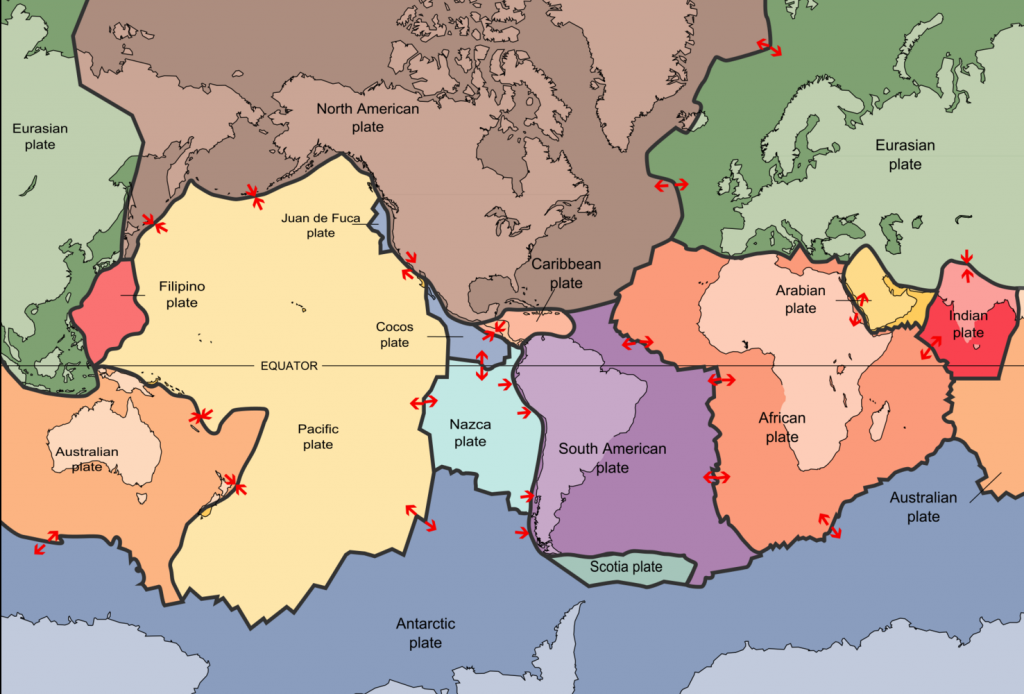Destructive Plate Margins
Destructive plate margins occur when tectonic plates move towards each other and collide.
A destructive plate margin can form when an oceanic and continental plate moves towards each other. The heavier, denser oceanic crust subducts the lighter, thicker continental plate. An oceanic trench forms as the oceanic crust partially bends and friction drags down the edge of the continental crust. Earthquakes can occur when friction is overcome. Ocean water drawn down within the sinking oceanic crust is released into the mantle, reducing its melting point and leading to partial melting and magma formation. Magma rises through the lithosphere and collects in magma chambers, which can lead to volcanic eruptions.
The movement of the oceanic plate is not smooth. Due to friction, the plate gets stuck. Pressure then builds up. The plate will eventually slip, causing an earthquake. The continental plate is crumpled by pressure, forming fold mountains.
When two continental tectonic plates converge, they cannot submerge into the mantle due to their composition. This lack of subduction leads to the plates crumpling upwards, forming fold mountains like the Himalayas. This geological event can result in shallow-focus earthquakes. However, it does not lead to volcanic activity, as no magma is involved in this process. Over time, these fold mountains can continue to experience compression, leading to further elevation.
When two oceanic tectonic plates converge, the older plate subducts the relatively younger plate. This happens because oceanic plates become colder and denser as they age. This process results in subduction. Ocean water drawn down within the sinking oceanic crust is released into the mantle, reducing its melting point and leading to partial melting and magma formation, which can rise to the surface. As this molten material encounters ocean water, it cools quickly, forming volcanic island arcs similar to those found in the Caribbean Sea.
Examples of oceanic-continental plate margins include the Pacific Plate and Eurasian Plate, and the Nazca Plate and the South American Plate.

A map to show the Earth’s plates
Find out about conservative and constructive plate margins.
Use the images below to explore related GeoTopics.